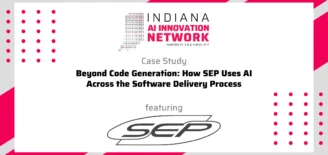Indiana should expand scope and size of venture capital tax credits
Currently, the Indiana Venture Capital (VC) space has a limited supply of capital to dispense. Meaning, Indiana startups can often struggle to take a great idea and turn it into a viable company here. Whereas, VC on the coast is plentiful. A tech CEO in Indy recently mentioned that a mediocre idea on the coast can fall into a few million dollars of VC investment while a great idea in Indiana will often struggle to find the necessary investment dollars. This dichotomy can lead to innovators leaving Indiana in search of VC funding, causing Indiana to miss out on the resulting job creation, capital deployment and economic impact.
So how does Indiana expand the VC money pool here? Enter the Venture Capital Investment Tax Credit (VCI) program. The VCI program improves access to capital for growing Indiana companies by providing individual and corporate investors an additional incentive to invest in early stage firms. Currently, investors who provide qualified debt or equity capital to Indiana companies receive a credit against their Indiana tax liability. Today, the maximum tax credit available is 20 percent of the investment, up to $1,000,000.
While this is a great program for encouraging investment in Indiana companies, it is currently limited in scope and size. First, VCI tax credits can only bring value to the extent an investor has an Indiana tax liability to apply them against. In practice, this can keep VC money sitting in Silicon Valley, Chicago or New York from entering the Hoosier state. Second, the VCI program is capped at $12,500,000 in certified credits each year. With the private equity, VC and technology scenes in Indiana all expanding, it is easy to see how the VCI’s annual credit limit could very quickly cut into the effectiveness of the program.
In an effort to improve the VCI program, Indiana House Bill 1001 would allow VCI tax credits to be assigned. Accordingly, a California VC firm or an individual domiciled and working in Texas, for example, could deploy their capital into Indiana by making an investment into a Hoosier business and then transfer the credits earned to an entity that had an Indiana tax liability. Rep. Julie Olthoff, R-Crown Point, who penned an even more robust VCI Bill earlier this year (See citation below.), noted “Venture capital money is so hard to find for so many businesses that have great ideas … so many ideas die on the table because they just don’t have the money to move them forward.”
While any improvements to the VCI program will be well received, especially by the startup community, making this tax credit a strategic advantage for the Hoosier state should be a top priority for Indiana legislators now, and in the future. McGuire Sponsel recognizes the impact the VCI program has on Hoosier innovators and how the program reduces innovation flight. For these reasons, McGuire Sponsel believes the best next step for the VCI program is to increase funding. Taking the current limit from $12,500,000 to $15,000,000 would simply increase the flow of new VC while also giving Indiana more of that strategic advantage the VCI program offers.
 About the Author
About the Author
Jake Madore is a Consultant with McGuire Sponsel where his practice revolves around collaborating with clients to deliver state and local economic development incentives, R&D tax credits, cost segregation and international tax incentives.
To have a discussion about the VCI program and what it can mean to your business and investors, contact Jake Madore at 317-469-8622 or email: jmadore@mcguiresponsel.com
McGuire Sponsel is a specialty tax firm focused on: Research and Development Tax Credits, Cost Segregation, IC-DISC, and Economic Development Tax Credits and Financing.
CITATION: [1] House Bill 1503: In addition to expanding the scope of investors, Bill 1503 would have also increased the amount of the credit and size of the program. As written, the credit percent would have gone from 20 to 25 percent and the funding would have increased from $12.5 million of approvals per year to $15 million.





































